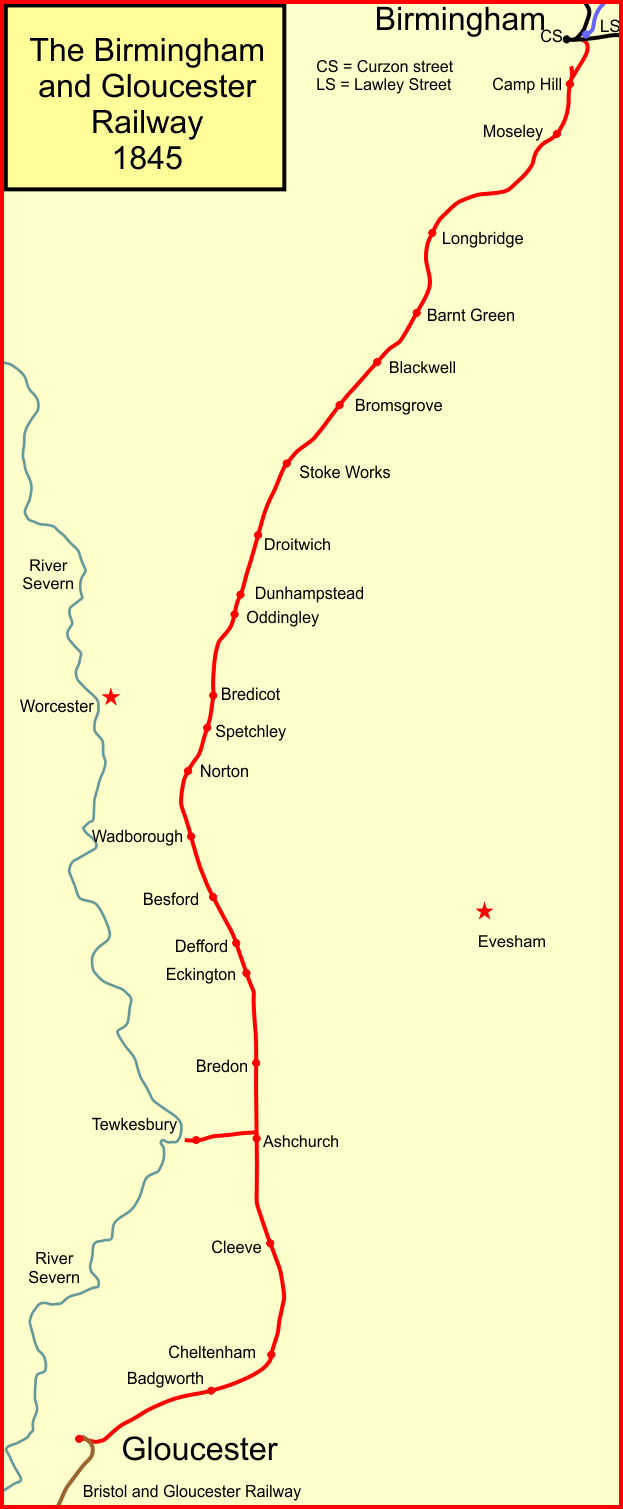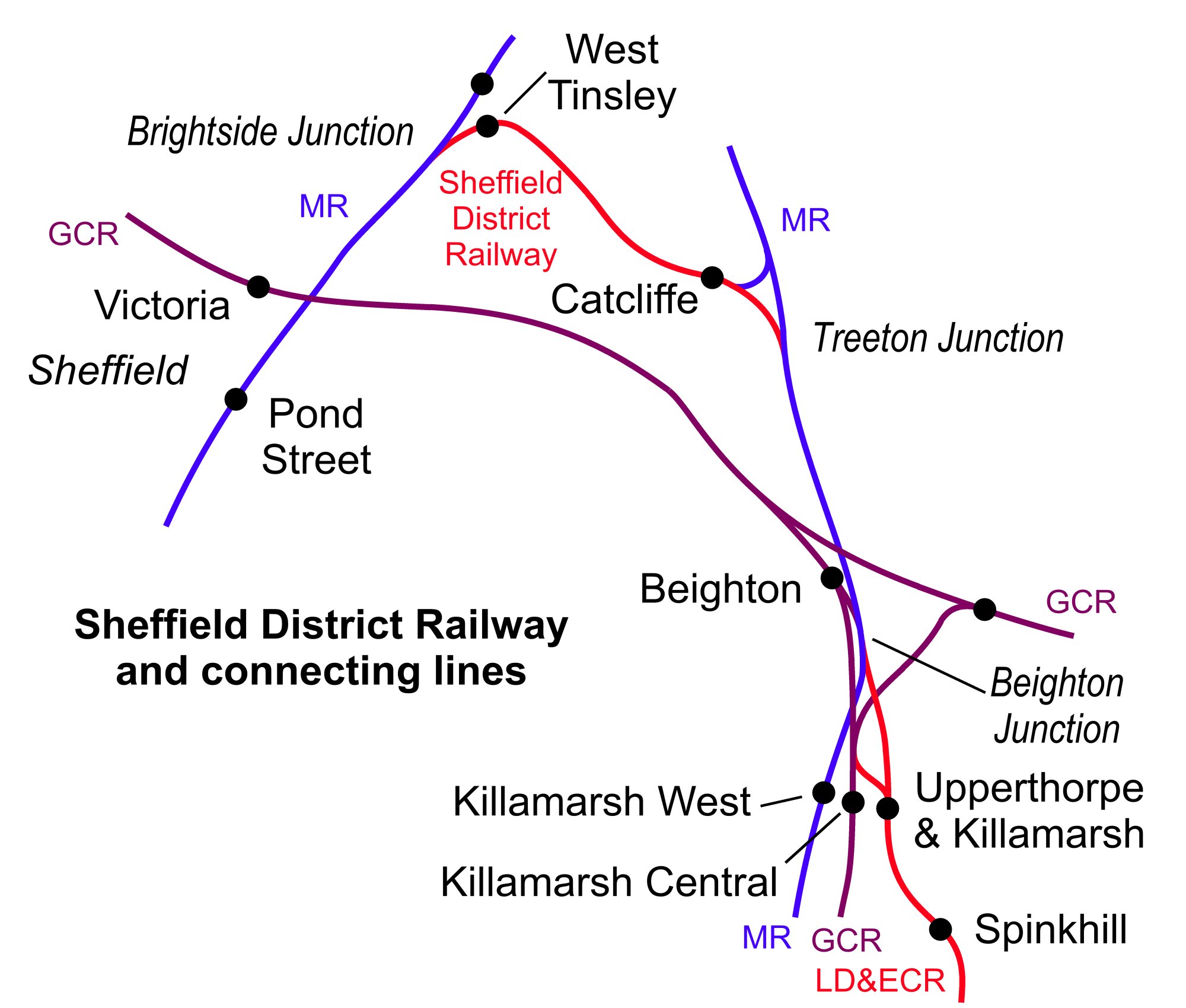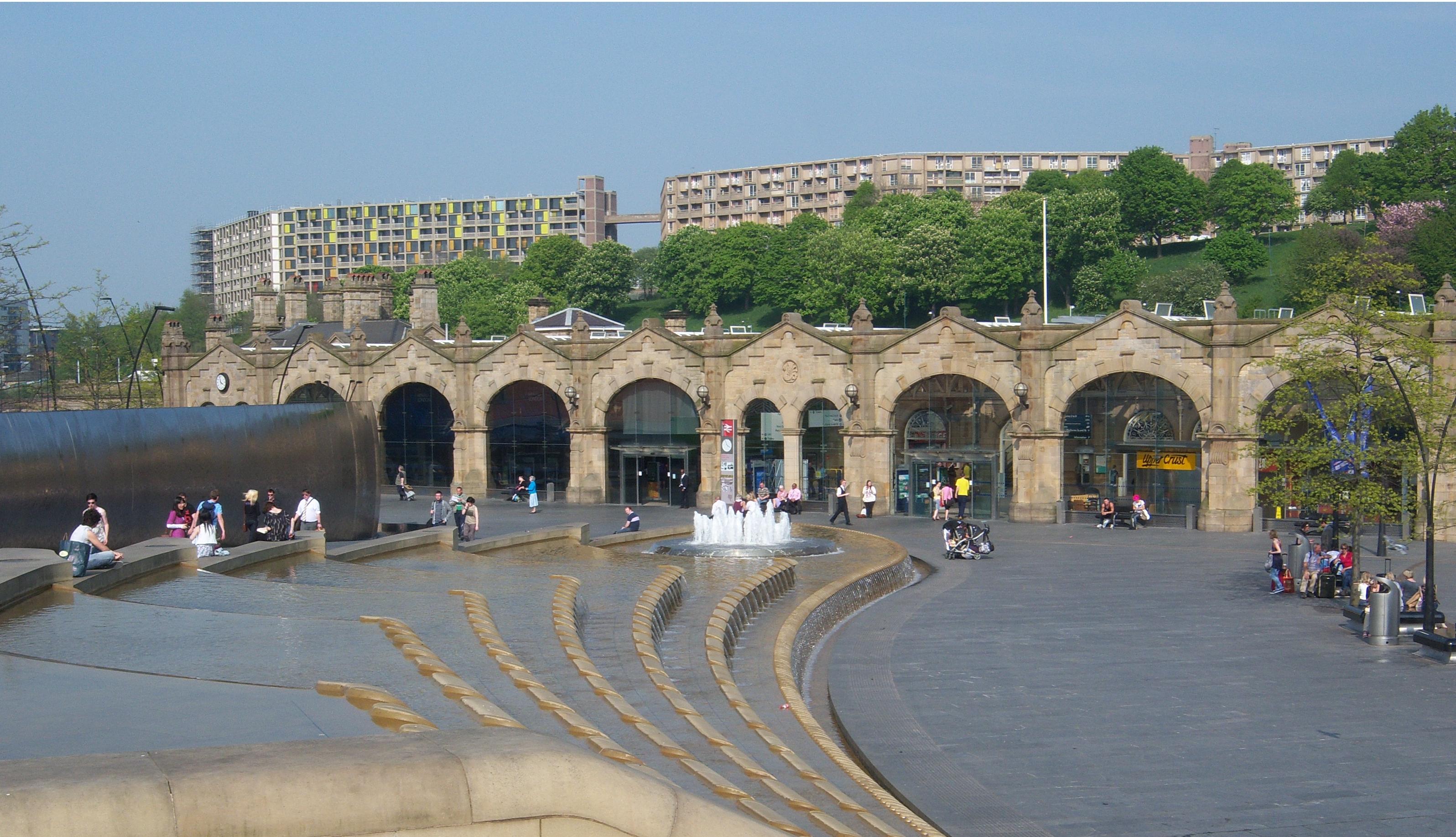|
Eckington And Renishaw Railway Station
Eckington and Renishaw railway station is a former railway station between Eckington and Renishaw in Derbyshire, England. See also Three stations have at some time included "Eckington" in their names: * on the Midland Railway route between and * on the Great Central Main Line between and , and *Eckington and Renishaw which is the subject of this article. History The station was opened by the North Midland Railway on their "Old Road" between Chesterfield and Rotherham Masborough. The original station was of an ornate Italianate design by Francis Thompson and was replaced by a new one fourteen chains further north in 1874. It was renamed by the Midland Railway as Eckington and Renishaw in 1886 since it was near to the Renishaw Iron Company's works and there was another "Eckington" station on the Birmingham and Gloucester Railway which the Midland had acquired. The Manchester, Sheffield and Lincolnshire Railway (later the Great Central Railway) subsequently open ... [...More Info...] [...Related Items...] OR: [Wikipedia] [Google] [Baidu] |
Eckington, Derbyshire
Eckington is a village and civil parish in North East Derbyshire, England. It is 7 miles (11 km) northeast of Chesterfield and 9 miles (14 km) southeast of Sheffield city centre, on the border with South Yorkshire. It lies on the B6052 and B6056 roads close to the A6135 for Sheffield and Junction 30 of the M1. It had a 2001 population of 11,152, increasing to 11,855 (including Bramley, Renishaw Marsh Lane and Troway) at the 2011 Census. History Ten Roman coins discovered in December 2008, near Eckington Cemetery may be evidence of a Roman settlement or road in the area. The oldest of the silver and copper coins is from the reign of the emperor Domitian (AD 81 to 96) while the others are from the reigns of Trajan (AD 98 to 117) and Hadrian (AD 117 to 138). Eckington is recorded in the Domesday Book in 1086 as ''Echintune'',''Domesday Book: A Complete Translation''. London: Penguin, 2003. p.1340 a manor given to Ralph Fitzhubert.who held several manors includi ... [...More Info...] [...Related Items...] OR: [Wikipedia] [Google] [Baidu] |
Birmingham And Gloucester Railway
The Birmingham and Gloucester Railway (B&GR) was the first name of the railway linking the cities in its name and of the company which pioneered and developed it; the line opened in stages in 1840, using a terminus at Camp Hill in Birmingham. It linked with the Bristol and Gloucester Railway in Gloucester, but at first that company's line was broad gauge, and Gloucester was a point of the necessary but inconvenient transhipment of goods and passengers onto gauge that became the national standard. Nearly all of the original main line remains active as a "trunk" route, also known as an arterial route or line. Its main line incorporated the Lickey Incline of track climbing a 1-in-37 (2.7%) gradient, northbound (and descending in the other). The climb was a challenge or impediment for many of the heaviest loads and weaker engines during the era of steam traction. Having attracted its own patronage, capital and accomplished fully functional transformation and employment of land, ... [...More Info...] [...Related Items...] OR: [Wikipedia] [Google] [Baidu] |
Railway Stations In Great Britain Closed In 1951
Rail transport (also known as train transport) is a means of transport that transfers passengers and goods on wheeled vehicles running on rails, which are incorporated in tracks. In contrast to road transport, where the vehicles run on a prepared flat surface, rail vehicles (rolling stock) are directionally guided by the tracks on which they run. Tracks usually consist of steel rails, installed on sleepers (ties) set in ballast, on which the rolling stock, usually fitted with metal wheels, moves. Other variations are also possible, such as "slab track", in which the rails are fastened to a concrete foundation resting on a prepared subsurface. Rolling stock in a rail transport system generally encounters lower frictional resistance than rubber-tyred road vehicles, so passenger and freight cars (carriages and wagons) can be coupled into longer trains. The operation is carried out by a railway company, providing transport between train stations or freight customer facilit ... [...More Info...] [...Related Items...] OR: [Wikipedia] [Google] [Baidu] |
Railway Stations In Great Britain Opened In 1840
Rail transport (also known as train transport) is a means of transport that transfers passengers and goods on wheeled vehicles running on rails, which are incorporated in tracks. In contrast to road transport, where the vehicles run on a prepared flat surface, rail vehicles (rolling stock) are directionally guided by the tracks on which they run. Tracks usually consist of steel rails, installed on sleepers (ties) set in ballast, on which the rolling stock, usually fitted with metal wheels, moves. Other variations are also possible, such as "slab track", in which the rails are fastened to a concrete foundation resting on a prepared subsurface. Rolling stock in a rail transport system generally encounters lower frictional resistance than rubber-tyred road vehicles, so passenger and freight cars (carriages and wagons) can be coupled into longer trains. The operation is carried out by a railway company, providing transport between train stations or freight customer faciliti ... [...More Info...] [...Related Items...] OR: [Wikipedia] [Google] [Baidu] |
Former Midland Railway Stations
A former is an object, such as a template, gauge or cutting die, which is used to form something such as a boat's hull. Typically, a former gives shape to a structure that may have complex curvature. A former may become an integral part of the finished structure, as in an aircraft fuselage, or it may be removable, being using in the construction process and then discarded or re-used. Aircraft formers Formers are used in the construction of aircraft fuselage, of which a typical fuselage has a series from the nose to the empennage, typically perpendicular to the longitudinal axis of the aircraft. The primary purpose of formers is to establish the shape of the fuselage and reduce the column length of stringers to prevent instability. Formers are typically attached to longerons, which support the skin of the aircraft. The "former-and-longeron" technique (also called stations and stringers) was adopted from boat construction, and was typical of light aircraft built until the ad ... [...More Info...] [...Related Items...] OR: [Wikipedia] [Google] [Baidu] |
Sheffield District Railway
The Sheffield District Railway was a railway line in South Yorkshire, England. It was built to give the Lancashire, Derbyshire and East Coast Railway access to Sheffield, primarily for goods traffic, for which a large goods depot at Attercliffe, in Sheffield, was built. The construction was sponsored by the LD&ECR and the Great Eastern Railway together, with the support of the Midland Railway, which agreed running powers over sections of its own lines. The Sheffield District Railway opened in 1900. The LD&ECR operated the passenger service, although the Midland Railway later ran passenger trains too. The SDR did not have rolling stock and did not operate trains itself. The LD&ECR was absorbed by the Great Central Railway in 1907, and the GCR inherited the LD&ECR running powers. In the 1960s British Railways sought to rationalise freight operations in the Sheffield area, and needed to build a marshalling yard that had good access to both the former Midland Railway and former Gr ... [...More Info...] [...Related Items...] OR: [Wikipedia] [Google] [Baidu] |
Sheffield Railway Station
Sheffield station, formerly ''Pond Street'' and later ''Sheffield Midland'', is a combined railway station and tram stop in Sheffield, England; it is the busiest station in South Yorkshire. Adjacent is Sheffield station/Sheffield Hallam University Sheffield Supertram stop. In 2017–18, the station was the 43rd-busiest in the UK and the 15th-busiest outside London. History 1870 - 1960 The station was opened in 1870 by the Midland Railway to the designs of the company architect John Holloway Sanders. It was the fifth and last station to be built in Sheffield city centre. The station was built on the 'New Line', which ran between Grimesthorpe Junction, on the former Sheffield and Rotherham Railway, and Tapton Junction, just north of Chesterfield. This line replaced the Midland Railway's previous route, the 'old road', to London, which ran from Sheffield Wicker via Rotherham. The new line and station were built despite some controversy and opposition locally. The Duke of Norf ... [...More Info...] [...Related Items...] OR: [Wikipedia] [Google] [Baidu] |
Midland Main Line
The Midland Main Line is a major railway line in England from London to Nottingham and Sheffield in the Midlands. It comprises the lines from London's St Pancras station via Leicester, Derby/Nottingham and Chesterfield in the East Midlands. Express passenger services on the line are operated by East Midlands Railway. The line is electrified between St Pancras and Corby and the section south of Bedford forms the northern half of the Thameslink network, with a semi-fast service to Brighton and other suburban services. A northern part of the route, between Derby and Chesterfield, also forms part of the Cross Country Route operated by CrossCountry. Tracks from Nottingham to Leeds via Barnsley and Sheffield are shared with Northern. East Midlands Railway also operates regional and local services using parts of the line. The Midland Main Line is to receive a major upgrade of new digital signalling and full line electrification from London to Sheffield. HS2 is to branch onto th ... [...More Info...] [...Related Items...] OR: [Wikipedia] [Google] [Baidu] |
British Rail
British Railways (BR), which from 1965 traded as British Rail, was a state-owned company that operated most of the overground rail transport in Great Britain from 1948 to 1997. It was formed from the nationalisation of the Big Four British railway companies, and was privatised in stages between 1994 and 1997. Originally a trading brand of the Railway Executive of the British Transport Commission, it became an independent statutory corporation in January 1963, when it was formally renamed the British Railways Board. The period of nationalisation saw sweeping changes in the railway. A process of dieselisation and electrification took place, and by 1968 steam locomotives had been entirely replaced by diesel and electric traction, except for the Vale of Rheidol Railway (a narrow-gauge tourist line). Passengers replaced freight as the main source of business, and one-third of the network was closed by the Beeching cuts of the 1960s in an effort to reduce rail subsidies. On privatis ... [...More Info...] [...Related Items...] OR: [Wikipedia] [Google] [Baidu] |
Renishaw Central Railway Station
Renishaw Central is a former railway station in Renishaw, Derbyshire, England. From its opening the station was named Eckington and Renishaw, but it was renamed "Renishaw Central" in 1950 by British Railways to prevent confusion with the nearby ex-Midland Railway station, also called Eckington and Renishaw. The station was on the Great Central Main Line which ran between and via . It had two platforms with wooden waiting rooms and canopies and a wooden ticket office on an overbridge at the southern end. The station was the junction for a Great Central branch to Renishaw Ironworks. A Midland branch to the ironworks passed under the platforms. There was also a branch to Renishaw Park colliery. Modern times The station has been demolished, but the trackbed forms part of the Central Section of the Trans Pennine Trail The Trans Pennine Trail is a long-distance path running from coast to coast across Northern England entirely on surfaced paths and using only gentle gradie ... [...More Info...] [...Related Items...] OR: [Wikipedia] [Google] [Baidu] |
Great Central Railway
The Great Central Railway in England was formed when the Manchester, Sheffield and Lincolnshire Railway changed its name in 1897, anticipating the opening in 1899 of its London Extension. On 1 January 1923, the company was grouped into the London and North Eastern Railway. History New name On assuming its new title, the Great Central Railway had a main line from Manchester London Road Station via , Sheffield Victoria, and Grimsby to . A second line left the line at Penistone and served , and Scunthorpe, before rejoining the Grimsby line at . Other lines linked Sheffield to Barnsley (via ) and Doncaster (via Rotherham) and also and Wrawby Junction. Branch lines in north Lincolnshire ran to Barton-upon-Humber and New Holland and served ironstone quarries in the Scunthorpe area. In the Manchester area, lines ran to Stalybridge and Glossop. In the 1890s, the MS&LR began constructing its Derbyshire lines, the first part of its push southwards. Leaving its east–west mai ... [...More Info...] [...Related Items...] OR: [Wikipedia] [Google] [Baidu] |
Manchester, Sheffield And Lincolnshire Railway
The Manchester, Sheffield and Lincolnshire Railway (MS&LR) was formed in 1847 when the Sheffield, Ashton-under-Lyne and Manchester Railway joined with authorised but unbuilt railway companies, forming a proposed network from Manchester to Grimsby. It pursued a policy of expanding its area of influence, especially in reaching west to Liverpool, which it ultimately did through the medium of the Cheshire Lines Committee network in joint partnership with the Great Northern Railway and the Midland Railway. Its dominant traffic was minerals, chiefly coal, and the main market was in London and the south of England. It was dependent on other lines to convey traffic southward. The London and North Western Railway was an exceptionally hostile partner, and in later years the MS&LR allied itself with the Great Northern Railway. Passenger traffic, especially around Manchester, was also an important business area, and well-patronised express trains to London were run in collaboration with th ... [...More Info...] [...Related Items...] OR: [Wikipedia] [Google] [Baidu] |







.jpg)
